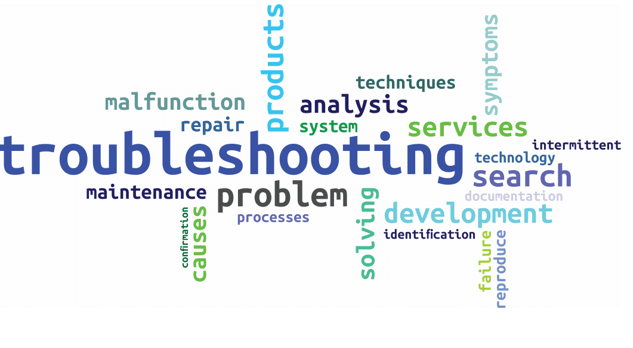
Troubleshooting is an essential part of working effectively in a histology lab. When something goes wrong, being able to systematically work through the variables that could potentially be at the root of the problem, will help you find the solution.
Here are some things to consider when troubleshooting and preventing errors from occurring in the first place.
-
Has the person performing the task been properly trained on the procedure?
-
Have you ensured that your instruments have been properly validated and are having the necessary maintenance performed, so they continue to work properly?
-
Look at how a specimen was initially fixed and processed. If there is a problem with the way the specimen was prepared, you are not going to see accurate end results.
-
How are your reagents being stored and prepared? Be aware of the storage requirements on the reagent label, such as temperature.
-
How are your slides and control material being stored? Control material that has been allowed to collect moisture, in a fridge for example, can sometimes oxidize, deteriorate and not work properly.
-
Do you have a quality control plan in place to evaluate these types of factors on a regular basis?
Many of your troubleshooting problems will fall into the categories of people, procedures or reagents. Look for changes in these elements, to see if you can identify a difference that may have initiated the problem. Are your procedures manual or automated? Manual procedures may leave room for a change in personnel to change the end result of the staining. Alternatively, your automated machine may not be applying reagents appropriately.
Techs have a tendency to blame the vendor, or the equipment, and the representatives have a tendency to blame the tech using the instruments and reagents, however, instead of finger pointing, both can consider the factors under their control and evaluate what may be playing a role in the problem. Labs can check some of the factors mentioned above, such as the control specimens; are they of the same nature as the test specimens (prepared the same way, etc) and appropriate for the protocol in question. The reagents; were they stored properly, prepared properly, used before their expiration date. Procedure; did it vary in any way from the validated procedure? If you’re using an automated machine, was it programmed correctly, calibrated, cleaned at regular intervals and serviced by the manufacturer when appropriate? Similarly, your vendor representative is going to look at these factors as well, to make sure that the products, services, and guidelines they have provided you with are what is necessary to get the intended staining result.
When you’re unsure which of the many factors is the root of the problem, test and retest! Run a controlled test with each variable to see which is producing the results in question. If you’re frequently encountering problems, it may be helpful to sit down with your team and create a chart, with a list of your common problems, the factors that impact the result, and the possible solutions, for a handy future reference.
You can find helpful tools, like validation guidelines, documents for drafting a quality control plan, and troubleshooting tips on NSH's Online Learning Center.
You can learn more about troubleshooting IHC stains in NSH’s QIHC Prep Course, presented by Joe Myers, MS, QIHC